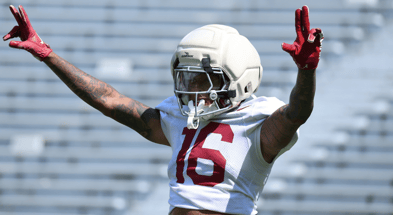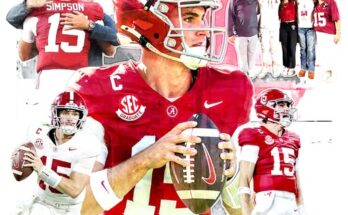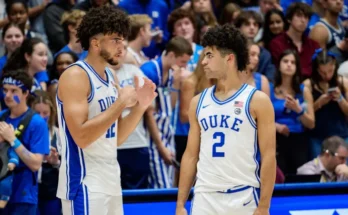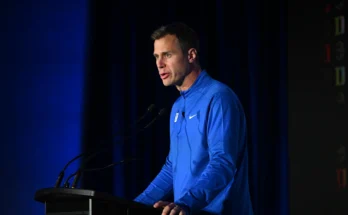Former Mississippi State Offensive Lineman and Alabama Tight End Jayden Hobson’s Sudden Absence From Crimson Tide Roster Raises Many Unanswered Questions
The college football world is full of unexpected twists, sudden changes, and behind-the-scenes moves that often leave fans and analysts scrambling to make sense of what has transpired. In recent days, one such development has emerged involving Alabama football and a player whose name had become somewhat familiar to followers of the Southeastern Conference. Jayden Hobson, a tight end who began his college journey as an offensive lineman at Mississippi State before making the transition to Alabama, is no longer listed on the Crimson Tide’s official roster. This development may seem like a small transaction in the larger landscape of college football, but for those who follow Alabama closely, and for those who track the journeys of players who bounce between positions and programs, Hobson’s absence represents an intriguing storyline that raises both speculation and questions about what exactly happened and what his future may hold.
Jayden Hobson’s journey is one that reflects the unpredictable paths that college football players often walk. Coming out of high school, Hobson was regarded as a versatile prospect with a big frame, capable of fitting into multiple positions depending on scheme and coaching needs. Mississippi State brought him in as an offensive lineman, and while he had the size and raw ability to compete in the trenches, his path was never entirely straightforward. Position changes in college football are not uncommon, especially for players who have athleticism that can translate into other areas of the field. In Hobson’s case, after a period of development at Mississippi State, the decision was made to explore him as a tight end. That change eventually coincided with a move to Alabama, one of the most competitive rosters in the nation, where every single position is stacked with talent and depth.
For players like Hobson, the opportunity to wear the Alabama jersey is both a privilege and a daunting challenge. Alabama under Nick Saban has long been the gold standard of college football, and every player who transfers into the program knows that the competition level is going to rise significantly. Even for players who were considered talented or promising elsewhere, cracking the two-deep rotation at Alabama can be incredibly difficult. Tight end, in particular, has been a position of strength for the Crimson Tide, with players who not only serve as pass-catching weapons but also carry significant blocking responsibilities. For Hobson, the switch from offensive line to tight end may have been seen as a chance to use his size in new ways, to give Alabama a depth piece who could bring a physical edge to the position.
Yet now, with the recent revelation that Hobson is no longer listed on Alabama’s roster, questions arise about what went wrong. Was this a mutual parting of ways, perhaps with Hobson deciding that another opportunity would better suit him? Was it a matter of roster management on Alabama’s side, with the coaching staff making difficult decisions about scholarship distribution and positional needs? Or was it related to injuries, academic matters, or personal circumstances that often affect players but rarely make the headlines? Without official clarification, all that remains is speculation, but the development itself is telling.
The timing of Hobson’s departure from the roster also adds another layer of intrigue. College football rosters are in constant flux, especially in the modern era of the transfer portal and shifting NIL dynamics. For a player to disappear from the roster at this point in the offseason suggests that either a decision was reached between player and staff or an unavoidable circumstance dictated the change. In either scenario, it underscores just how difficult the college football grind can be, especially at a place like Alabama where expectations are relentlessly high.
Fans may view this as a minor roster note, something that will not alter Alabama’s trajectory in the upcoming season. After all, the Crimson Tide reload at every position, and the tight end room still has plenty of depth. But for Hobson, this represents a significant personal crossroads. Having already made the shift from Mississippi State to Alabama, and from offensive line to tight end, his football journey has been one of persistence and adaptation. Now, with his departure from the Alabama roster, the question becomes: where does he go from here? Does he seek another program that can offer more immediate playing time? Does he consider moving back to the offensive line if that gives him a better opportunity to see the field? Or is there a possibility that his football career may reach a pause as he evaluates his long-term options?
The story of players like Hobson is important because it illustrates how college football is not only about stars and headlines but also about the hundreds of athletes who work tirelessly behind the scenes, battling for roster spots, fighting through practices, and doing everything in their power to contribute. For every All-American tight end or first-round draft pick offensive lineman, there are dozens of players whose stories are rarely told but whose efforts are just as meaningful to the teams they represent. Hobson’s disappearance from the roster is a reminder that the margin between being part of the program and being on the outside is razor-thin, especially at powerhouse schools.
Alabama’s culture under Nick Saban has always been built on competition, accountability, and a relentless pursuit of excellence. Players who thrive there are those who embrace the challenge, who can handle not only the physical demands but also the mental pressure of knowing that every rep is being evaluated and every game is an audition. Hobson’s journey may have simply run into the reality of Alabama’s depth chart. It is possible that, despite his size and work ethic, the Tide’s coaching staff evaluated the situation and determined that other players were better positioned to contribute at the tight end spot this season. If that is the case, it does not diminish Hobson’s efforts but simply highlights the brutal math of college football rosters.
What makes this situation even more compelling is the broader context of roster management in the NIL and transfer portal era. Players now have more flexibility to move between programs than ever before, but that also means roster turnover has increased dramatically. For Alabama, losing Hobson may open the door for another young player or incoming recruit to step into the rotation. For Hobson, the portal provides an opportunity to find a landing spot that better suits his talents and career goals. The landscape has shifted in such a way that no player’s journey is ever set in stone, and what looks like a setback at one moment may turn into a fresh opportunity in the next.
From the perspective of Alabama fans, this news likely will not spark panic or even significant concern, but it is worth considering how each of these departures shapes the program’s identity. Alabama has long prided itself on not only recruiting elite talent but also on developing players across multiple positions. Hobson’s story, in a way, reflects the risks and rewards of that approach. Taking a player who was originally an offensive lineman and giving him a chance at tight end demonstrates creativity and a willingness to experiment. That it ultimately did not work out, at least in the form of Hobson remaining on the roster, is a reminder that not every experiment succeeds.
At the same time, Hobson’s journey also underscores the resilience required of athletes. To even reach the point of playing at Mississippi State, let alone transferring to Alabama, required years of work, discipline, and sacrifice. Every step along the way, Hobson faced competition and adversity, and his willingness to switch positions speaks to his adaptability and determination. Even if his time at Alabama has come to an end, those qualities will serve him well moving forward, whether in football or in life beyond the game.
In the grand narrative of Alabama football, Jayden Hobson may be remembered as a name that passed through without much fanfare, overshadowed by bigger headlines and star players. But to view it that way would be to miss the human element of his journey. For Hobson, this was not just a line on a roster sheet—it was his life, his passion, his identity as an athlete. Being removed from the roster is not simply about statistics or depth charts; it is about dreams deferred, challenges faced, and decisions that will shape his next chapter.
As the season approaches, Alabama will move forward with its usual focus on championships, depth charts, and the pursuit of dominance. But somewhere beyond that spotlight, Hobson will be charting his next steps, carrying with him the lessons he learned from both Mississippi State and Alabama. Whether he finds another program, returns to the offensive line, or decides that a different path awaits him, his story is still being written. The only certainty is that his absence from the Alabama roster has created a new set of questions, both for him and for those who follow the Crimson Tide closely.
In the end, stories like Hobson’s remind us why college football captivates so many. It is not just the thrill of the big games or the star players who go on to NFL stardom. It is also about the countless athletes who give their all, who adapt and adjust, who face setbacks but continue pushing forward. Jayden Hobson may no longer be listed on Alabama’s roster, but his journey is far from over, and the next chapter could prove to be just as compelling as the one that has just closed.



